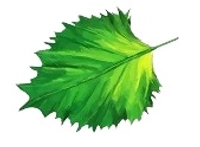
Joginder Nursery
Product details
Transform Your Living Space with the Elegant Boston Fern (Fern Boston Plant)
Elevate your indoor sanctuary with the timeless beauty of the Boston Fern, also known as the Fern Boston Plant. Originating from tropical regions, this indoor plant is celebrated for its lush, feathery fronds that gracefully arch outward, creating a luxurious and vibrant atmosphere in any home or office environment. Its distinctive foliage not only adds a touch of natural elegance but also offers several benefits that enhance your indoor living experience.
Indoor Benefits
Air Purification: The Boston Fern acts as a natural air purifier, effectively removing toxins such as formaldehyde and xylene from indoor air, promoting a healthier living space.
Aesthetic Appeal: With its delicate, green fronds cascading in an arching pattern, the Boston Fern brings a refreshing, forest-like ambiance indoors, perfect for hanging baskets or as a floor plant.
Stress Reduction: Studies suggest that the presence of indoor greenery like the Boston Fern can reduce stress levels, creating a calming atmosphere ideal for relaxation areas.
Humidity Regulation: Thriving in moderate to high humidity, the Boston Fern helps maintain optimal moisture levels indoors, beneficial for dry climates or air-conditioned rooms.
Plant Care Instructions
Light: Place your Boston Fern in bright, indirect sunlight. It can tolerate lower light conditions but thrives best in filtered light.
Watering: Keep the soil consistently moist but not waterlogged. Water when the top inch of soil feels dry, and reduce watering during winter.
Soil: Use a well-draining potting mix rich in organic matter. Fern-specific mixes or blends suitable for indoor plants work well.
Humidity: Mist the leaves regularly or place the plant on a humidity tray to increase humidity levels, especially in dry indoor environments.
Temperature: Maintain temperatures between 60-75°F (15-24°C). Avoid cold drafts and direct heat sources.
Fertilizing: Feed with a balanced liquid fertilizer diluted to half-strength every 4-6 weeks during the growing season. Reduce feeding in winter.
Common Problems and Solutions
Yellowing Leaves: Often a sign of overwatering. Allow the soil to dry out slightly between waterings.
Brown Tips on Leaves: Low humidity or water with high mineral content can cause this issue. Increase humidity or use distilled water for watering.
Pests: Watch for spider mites or scale insects. Treat promptly with insecticidal soap and wipe leaves gently to remove pests.
Slow Growth: Insufficient light or nutrients may be the cause. Move the plant to a brighter spot and ensure regular fertilization during the growing season.
Please Note: Product images are for reference only. Actual plant appearance may vary based on climate, age, and height. The product can be replaced but not returned.
Similar products